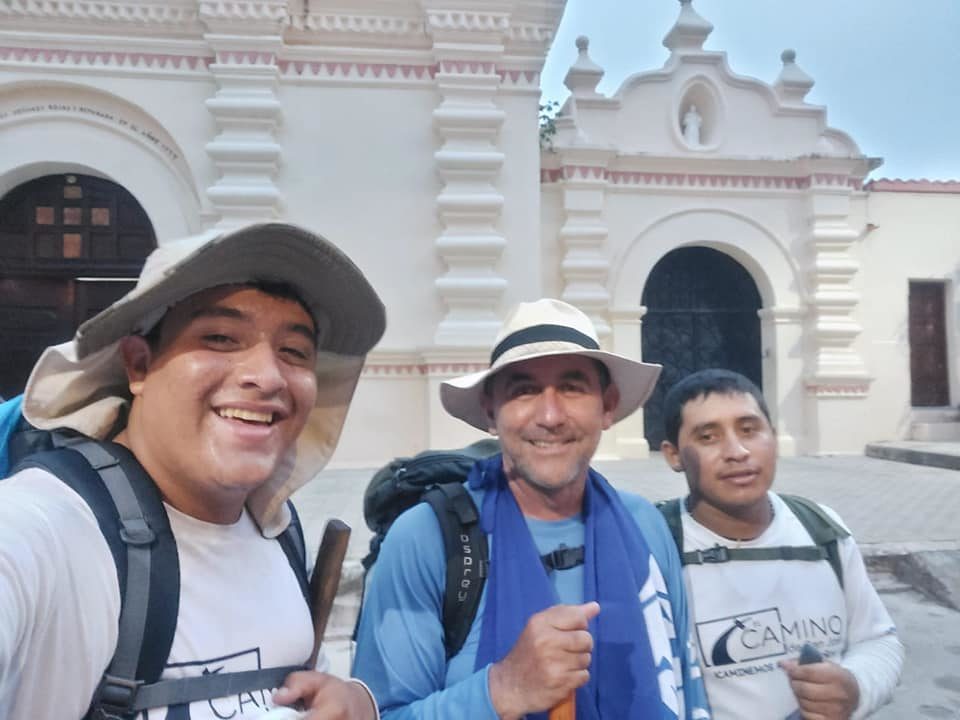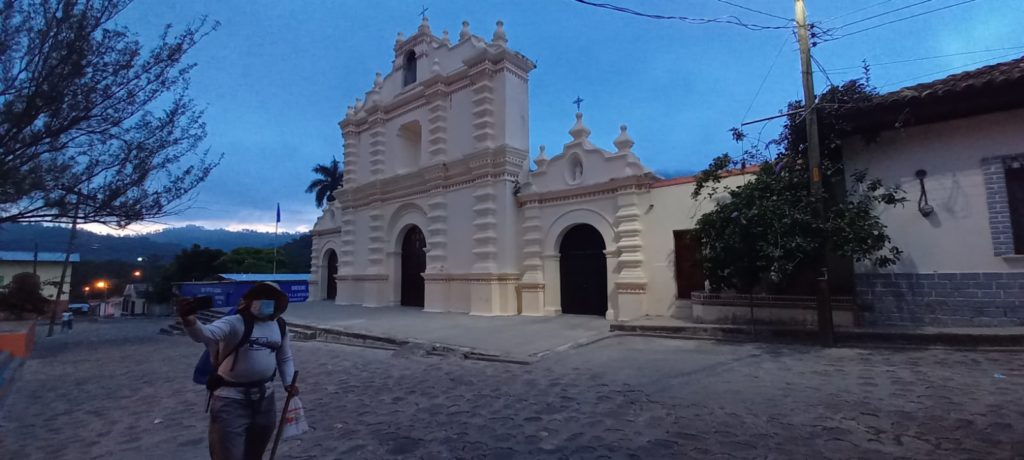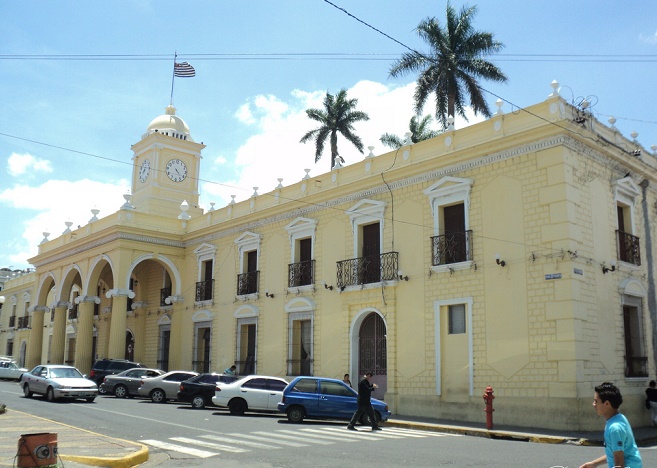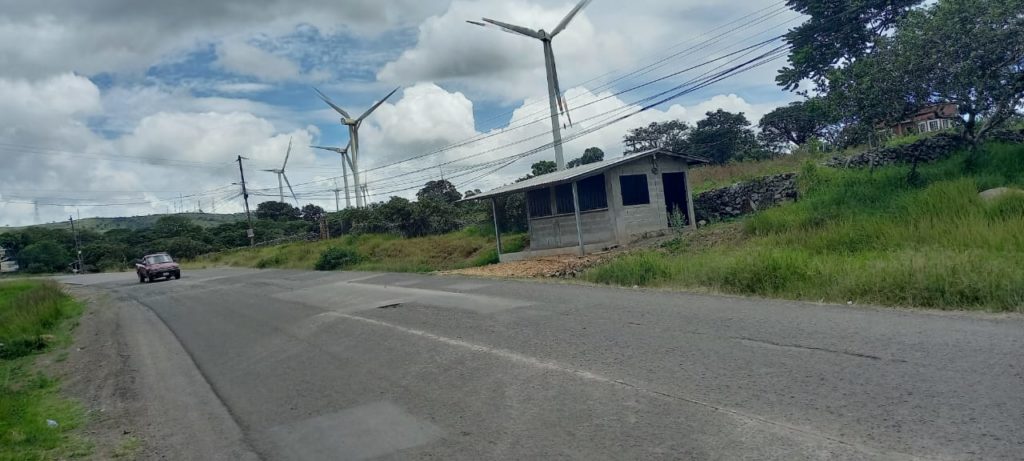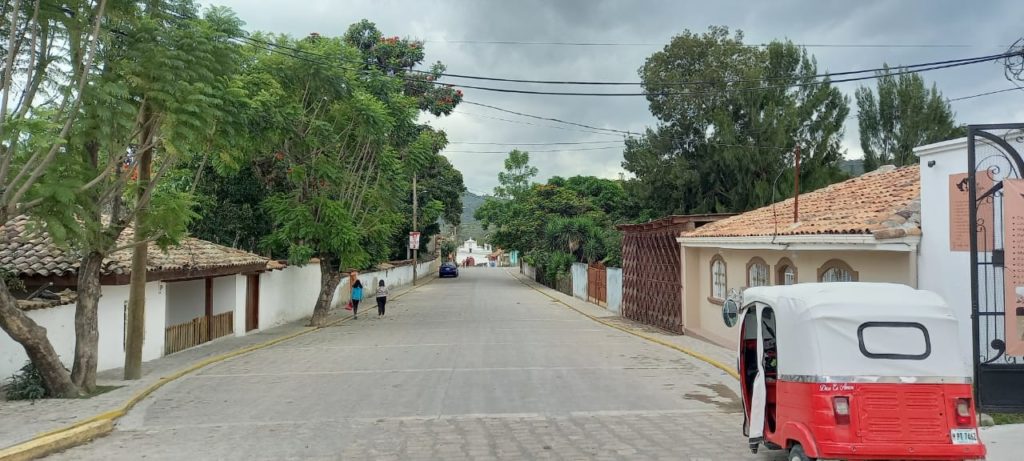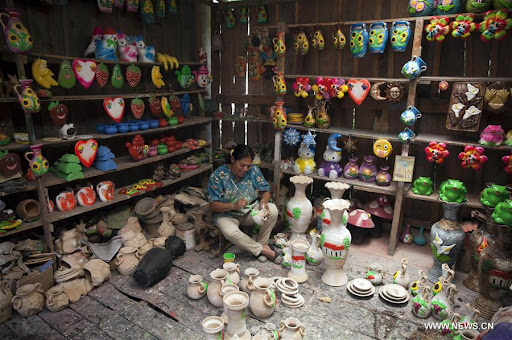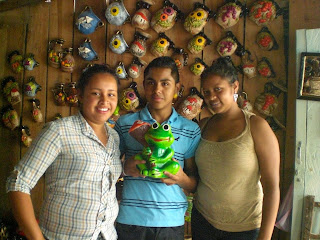16 August
When we left Fr. Miguel, Ignacio, and Eduardo, they were in Pespire, Honduras, which is in the lowlands along the Pacific coast, just north of the Gulf of Fonseca. This area tends to trap heat, so the temperature and humidity had been oppressive for the last few days, contributing to the team struggling with dehydration and fatigue. The team usually sets out for the day’s walk before dawn. But they left Pespire even earlier, at 4AM, to get ahead of the heat.
The route for the day from Pespire to Sabanagrande, Honduras took our travelers from the lowlands into a more mountainous region, as you can see from this topographic map.

(Isn’t Google Maps an incredible tool?) Over the course of the day, the team walked almost 24 miles and dealt with a change in elevation of about 3,000 feet.
These conditions, coupled with the challenges they had already endured over the last few days, required frequent rest breaks. During one of these breaks, early in the day, they heard something crying. They soon discovered the source, a small female cat who appeared to be lost and hungry.

It was decided that they should take the cat along, hoping to find a home for her. They named her Pespirita. She quickly bonded with Eduardo.
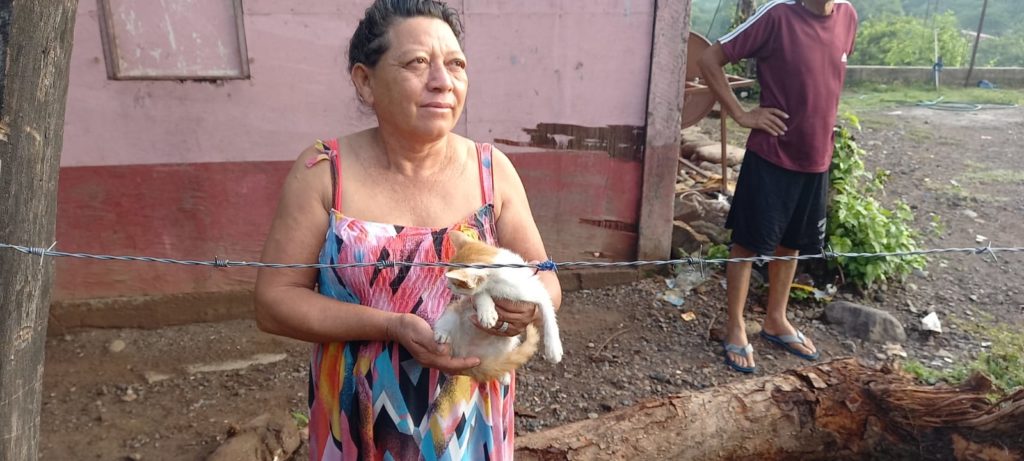
As the team walked, they asked several people they met if they would be interested in adopting a cat. But no one wanted the responsibility of a female and her potential kittens. Finally this sweet lady said, “Yes!” And just like that, Pespirita had a new home.

The road to Sabanagrande continued to present many challenges.
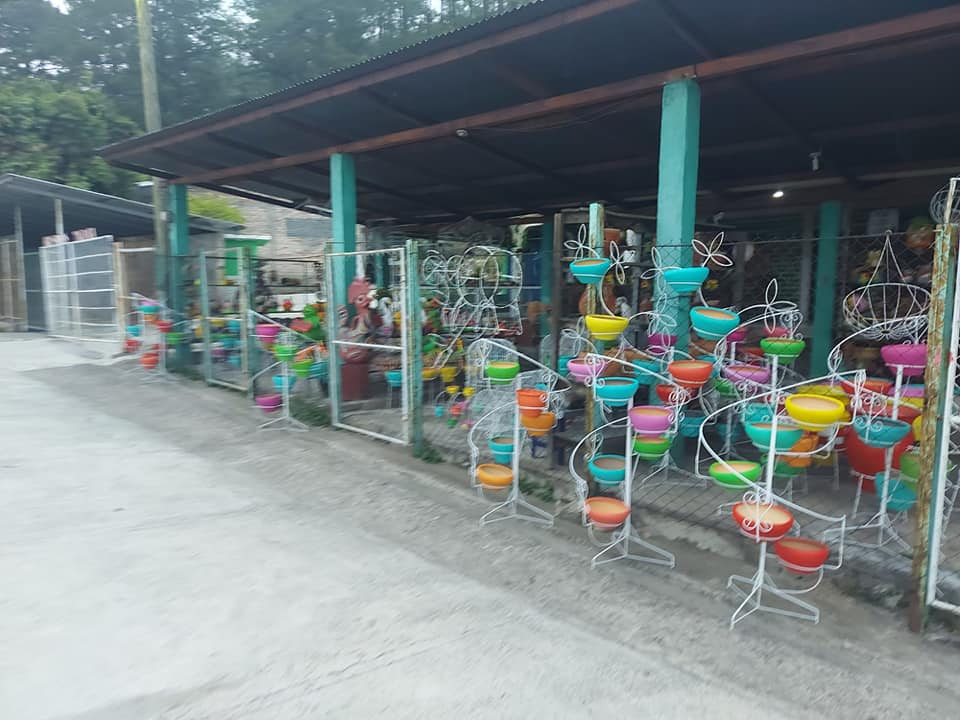
But there were plenty of colorful and interesting places to stop along the way.

The team climbed higher and higher.
Finally, after walking for almost 14 hours, the weary pilgrims arrived in Sabanagrande, Honduras around 6PM. Eduardo looks SO happy to have arrived! Ignacio and Fr. Miguel appear simply exhausted! ?

Sabanagrande is a beautiful town of about 22,000 inhabitants. More than 30 years ago, the city adopted the tradition of making Christmas nativity scenes. In 2014, they won first place at the municipal level.
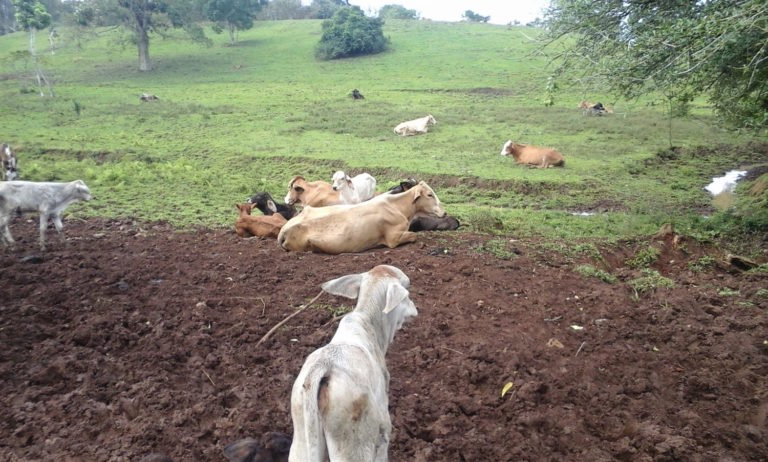
Cattle ranching provides the backbone of the local economy. Many people also make their living by farming corn and beans and by selling dairy products, especially cheese.
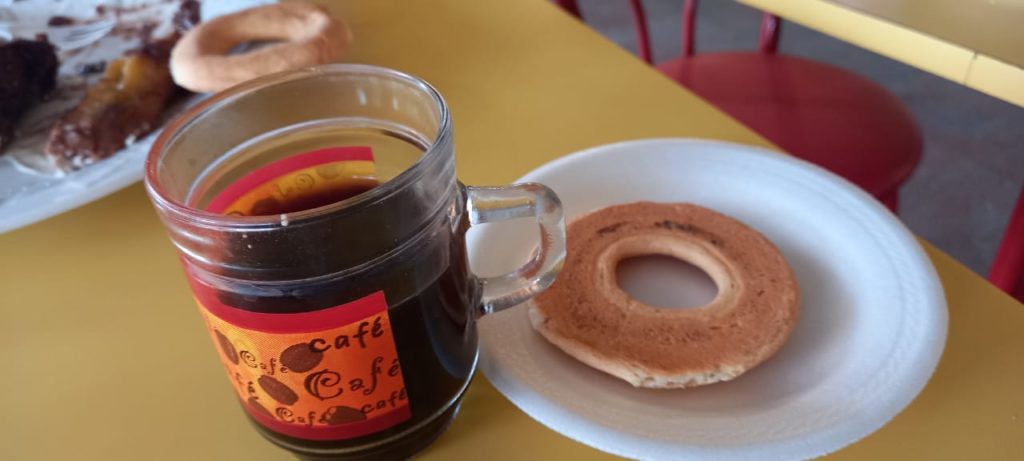
Sabanagrande is famous for its rosquillas, little donut shaped cookies made from corn masa (a type of corn flour) and a Central American cheese similar to cotija. Rosquillas are unlike any other pastry, but they are sometimes compared to Italian biscotti. Both are very dry and crisp, with a slightly burnt flavor. Rosquillas are traditionally served with a cup of hot coffee, and are usually soaked in the coffee for about 30 seconds before being eaten. (This photo was from Fr. Miguel’s breakfast the following morning. Yum!)
The team was to spend the night at the lovely Parroquia de Nuestra Señora del Rosario (Our Lady of the Rosary Parish).

They were graciously received by Sr. Geisy and the other Sisters of the Holy Family.

After the heat of the lowlands, the climb to Sabanagrande, and the long day of walking, the team thought their accommodations seemed like a little piece of heaven!
17 August
After bidding goodbye to the Sisters, Fr. Miguel, Ignacio, and Eduardo set out for the day. The planned route was much shorter than the day before, covering a distance of only a little over 10 miles. And the weather was much more agreeable as well, with the forecast calling for highs in the mid 80s.
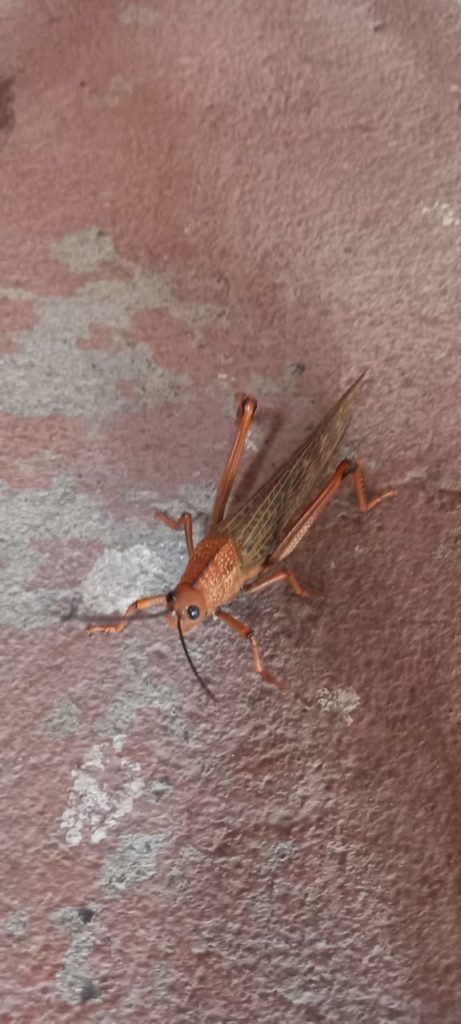
After walking about half of the distance, the team stopped for a breakfast of rosquillas and coffee…and a little fellowship with the local wildlife. This guy is called a cigarra. Fr. Miguel said he was more than two inches long and very loud!

One of the principal crops of southern Honduras is sugar cane.
Along the way, the route passed through Santa Ana, Honduras.

Santa Ana is known as “La Ciudad de Los Vientos” (City of the Winds). Its wind farm, the largest in Central America, is a major tourist attraction. The Cerro de Hula Wind Project, begun in 2011, is equipped with 63 wind turbines and generates 102 megawatts per year. It stands at about 5,700 feet above sea level.

They finally made it to the top of the hill!

A fun landmark in the area is the Chatarra Cross. Situated on top of Hula Hill, it is made from car parts. From its location, there are spectacular views of the surrounding area.
There were just a few more miles to go…
By lunch time, the team had made it to their destination – Ojojona, Honduras.

Time for a little coyotito! (See previous post for an explanation of this term…?)
Founded in 1579 by Spanish miners who worked in the silver and gold mines of the area, Ojojona is known for its crafts, especially clay and leather working. These, along with tourism, provide the principal sources of income for the residents of the city.
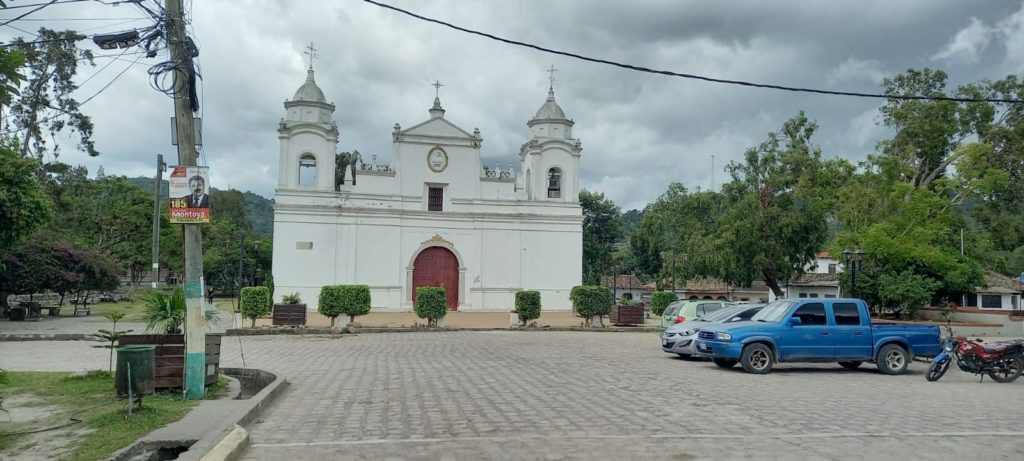
Ojojona is about 5,000 feet above sea level. Fr. Miguel reports that the weather has been wonderful and that they continue to feel that they are enjoying a little bit of heaven. ?
And now for a special message from Fr. Miguel:
I hope you’re enjoying the journey so far. In my next post: Onward to Tegucigalpa!


